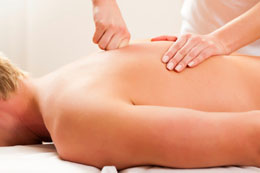
Although hip pain is not one of the top three pains – headache, lower back pain, and neck pain, the agonizing pain can make everyday tasks like using the stairs, sitting, getting in and out of a car, nearly impossible. People of all ages can fall prey to this severe problem of hip pain due to several different reasons. Managing pain in the hips can become a difficult job as it worsens with age. Coping with aching hips becomes easier if you understand the anatomy of hip well. Let us have a look at it.
Anatomy of Hip
The hip is made up of bones, cartilage, muscles, and ligaments. It is the largest ‘ball and socket’ joint in the body, and is made of two different bones, the pelvis and the femur. The rounded end of the femur, also known as the thigh bone, forms the ‘ball’, and the ‘socket’ is a concave depression, known as acetabulum, in the lower side of the pelvis. The head of the femur fits into this depression and forms the hip joint. The joint is held in position by extremely strong ligaments that protect it from dislocation. Hip joint allows a great deal of flexibility and motion within the joint during walking, running, and climbing.
Extreme pain down the thigh commonly occurs due to trauma or abnormality in the hip, however, there can be several other causes of hip pain. Several structures which form part of the hip joint as well as those that surround the hip can be responsible for causing pain. Any source of inflammation in the hip or the surrounding area can also lead to intense pain. Swelling, warmth, and redness are some of the symptoms along with the unbearable pain.
Causes
Some of the common causes of hip bone pain are as follows:
Hip bone fracture
Osteoporosis (low bone density)
Hip Bursitis (inflammation of the bursa, fluid-filled sac near hip joint). A bursa provides a gliding surface and helps reduce friction between moving tissues.
Osteoarthritis
Rheumatoid arthritis
Aseptic necrosis (diminished blood supply to the bone resulting in localized bone death)
Osteomyelitis (an infection in the bone)
Toxic Synovitis (a type of arthritis of the hip, that occurs in children before the onset of puberty)
Tendonitis (the tendon that attaches a muscle to the bone gets pulled due to overuse of the muscle)
Pinched Nerve
Pain in the lower back
Infection
Strain or sprain
Bone spurs (bony projections that develop along the edges of bones) or other abnormalities in the hip
Hip dysplasia (congenital or developmental deformation/misalignment of the hip joint)
Hip Pain During Pregnancy
Most women experience sharp pain in the hips during pregnancy, especially in the last trimester. It is a very common and uncomfortable side effect of pregnancy. During pregnancy, particularly in the last trimester, the body releases a hormone known as relaxin. This hormone relaxes and loosens the joints and muscles in the pelvic area, preparing the body for labor and delivery. The muscles and ligaments respond differently to relaxin, and may result in hip pain. The change in the posture during pregnancy may also be held responsible for pain in the hip. Using a pillow between the legs and under the abdomen while sleeping can relieve the hip pain to some extent.
Aching hips is a common complaint of many runners. There are several factors that can lead to pain while running, including the type of surface you run on, length of your running stride, and the type of footwear. However, hip bone pain in runners mainly occurs due to an injury. Hip overuse injuries result in tendonitis and bursitis. Those who participate in running, cycling, football, hockey, soccer, etc., are more likely to suffer from hip overuse injuries. Inflammation of the joint leads to pain and discomfort when sitting or running.
To conclude, we would say, get your hip pain treated as soon as you see the symptoms, as it gets worse with age and becomes difficult to treat effectively. Take care!




















